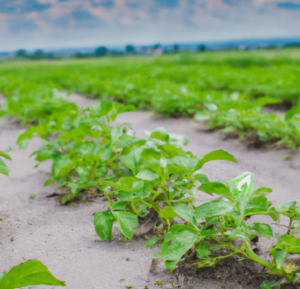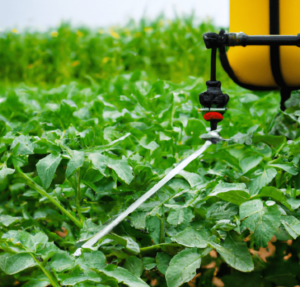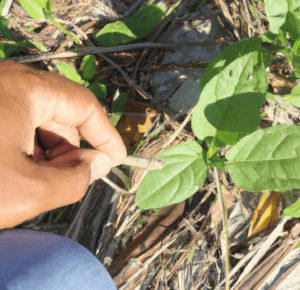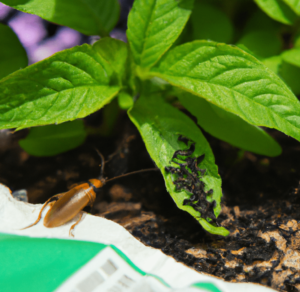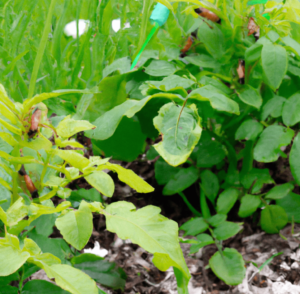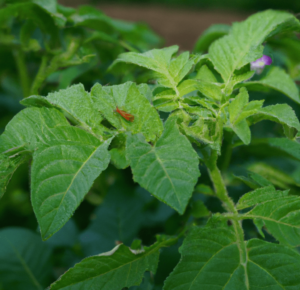Herbicides have been a mainstay of agriculture and landscaping for a long time since they offer a quick and simple way to get rid of weeds and keep clean lawns. However, worries about the dangers of using chemical herbicides and their effects on the environment and human health have recently prompted many people to look for natural alternatives. We’ll discuss the use of herbicides in landscaping and agriculture, the issues associated with their use, and the natural alternatives to chemical herbicides in this article.
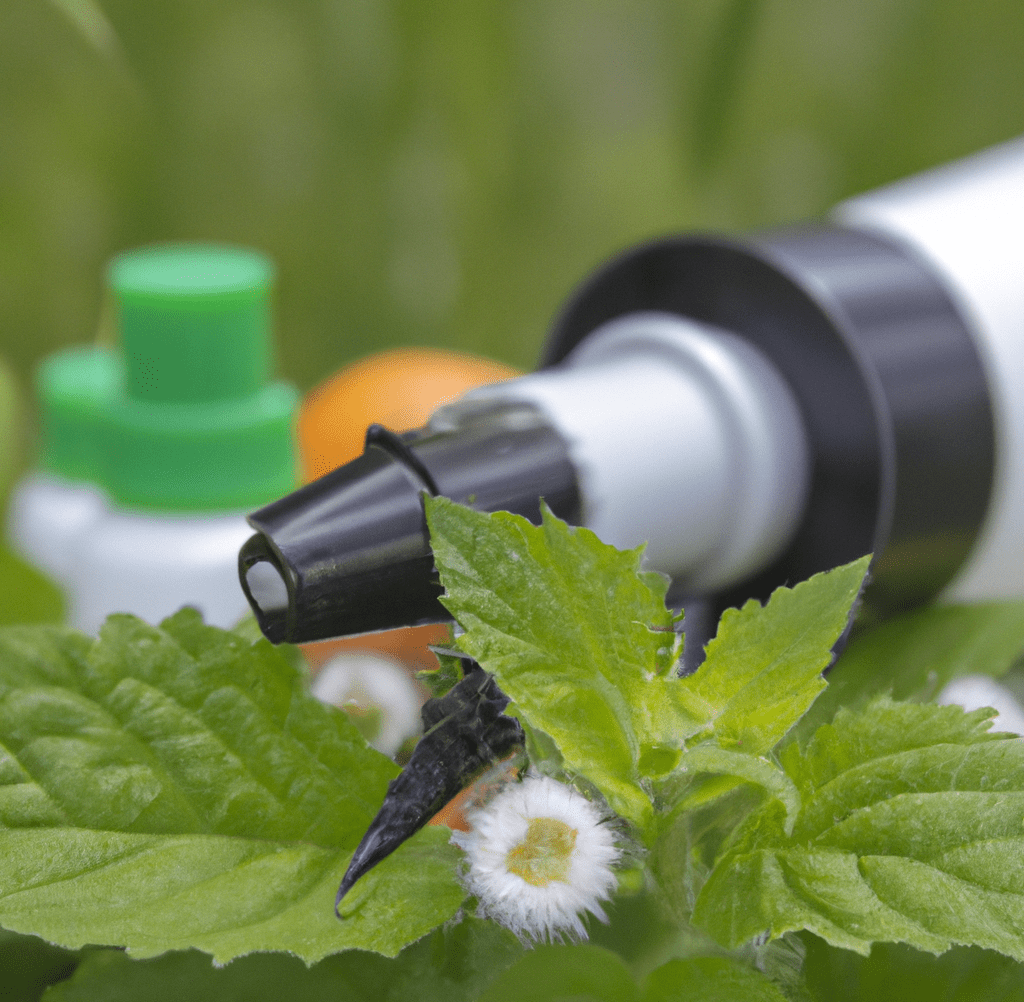
What are Herbicides?
Herbicides are chemicals used to eradicate or manage the development of plants, particularly weeds. They are frequently used in landscaping to prevent weed growth on lawns and gardens as well as in agriculture to maintain crop yields and lessen competition from weeds. Despite being widely used, chemical herbicides raise concerns among many people over their effects on the environment and human health. These substances have the potential to harm plants and wildlife by leaking into the soil and groundwater. Chemical herbicide exposure can also be harmful to people’s and animals’ health which is why natural alternatives to chemical herbicides are used often instead.
Understanding Weeds and Their Growth
Let’s define weeds before discussing the natural alternatives to chemical herbicides. Weeds are unwelcome plants that frequently appear in landscapes that have been intentionally created. They compete with desirable flora for scarce resources like water and nutrients. In order to manage and control their presence in our gardens and lawns, it’s essential to understand how weeds develop and spread.
Weeds can survive in a variety of soil conditions and grow in a variety of situations. They’re resilient and hardy plants because they can frequently adapt to challenging circumstances. Weed development is significantly influenced by the surrounding environment and soil particles. Weed seed germination, establishment, and growth can be impacted by the physical and chemical properties of the soil, including its texture, pH, and water-holding capacity.
In addition to environmental considerations, cultural practices like irrigation, mowing, and the application of fertilizers in gardens can also have an impact on weed growth. Landscapes that are not properly maintained and cared for may experience an increase in weed growth that is challenging to control. Understanding the elements that lead to weed growth, as well as their biology and lifetime, is crucial for efficient weed control. We can prevent weed growth and maintain the best-looking outdoor spaces by adopting proactive measures to maintain a healthy and well-maintained landscape.
The Different Types of Weeds and Their Growth Patterns
Weeds are undesirable plants that spread into regions where they can compete with crops, flowers, and other plants for water and nutrients. The many weed species and their development habits must be understood in order to maintain healthy gardens and landscapes. Before we learn about the natural alternatives to chemical herbicides to prevent weeds from growing in the soil, here are the different types you should know about:
- Annual Weeds: These weeds produce seeds that can survive in the soil for a long time and complete their life cycle in one growing season. Physical removal of annual weeds or the use of a pre-emergent pesticide to stop seed germination is frequently necessary for effective control.
- Perennial Weeds: These weeds can reappear from roots, rhizomes, or bulbs and live for several years. It may be necessary to apply pesticide repeatedly or dig up the roots of perennial weeds in order to control them because they are more difficult to eradicate than annual weeds.
- Broadleaf Weeds: These weeds, which can be either annual or perennial, have leaves that are wider than grass blades. These sorts of weeds can be effectively controlled with broadleaf herbicides like glyphosate, but caution must be exercised to protect desirable plants.
- Grassy Weeds: These weeds, which include varieties like crabgrass, foxtail, and quackgrass, have leaves that are roughly the same width as grass blades. The most effective method for controlling grassy weeds is with post-emergent herbicides, however pre-emergent herbicides can also be used to stop seed germination.
Environmental consciousness has received more attention in recent years, and many customers are searching for weed control methods that are less damaging to the environment. There are now a variety of safer alternatives to conventional herbicides for controlling weeds, including vinegar and boiling water, which can be used in organic landscaping.
Importance of Understanding Weeds for Effective Herbicide Alternatives
By competing with the desirable plants for nutrients, water, and space, weeds can seriously harm crops and landscapes. and herbicides are a regularly used product to address this problem. However, in order to select the herbicide that will produce the greatest results, it’s essential to have a thorough grasp of weeds and their behavior.
For instance, the herbicide’s effectiveness may be considerably impacted by the soil particles in which a specific weed species thrive. Therefore, a better herbicide application can result from an understanding of the link between soil and weeds. It’s important to consider these criteria when choosing a herbicide because the weed’s stage of development can also affect how effective the herbicide is.
Natural Alternatives to Chemical Herbicides
Broadleaf weeds in landscapes have been controlled by chemical herbicides containing glyphosate, although they can be dangerous to the environment and people’s health. Additionally, the expense of these chemicals can mount, making it difficult for homeowners to maintain their gardens and lawns. Fortunately, there are safe, affordable, and environmentally acceptable natural alternatives to conventional pesticides. These substitutes are safe to use near kids, pets, and other wildlife while still providing excellent control of broadleaf weeds and other pests in landscapes.
The following are some of the top natural alternatives to chemical herbicides:
- Crop rotation: Rotate your crops in your garden to minimize the growth of weeds and pests, which will help you use fewer chemicals.
- Mulching: By providing a thick layer of mulch around plants, weeds can be stopped in their tracks and less herbicide will be needed.
- Hand-weeding: Although it may seem like a difficult effort, hand-weeding can be a successful method of getting rid of broadleaf weeds without the use of chemicals.
- Home remedies: Natural weed killers can be used to eliminate broadleaf weeds without the use of chemicals. These include vinegar, salt, and boiling water.
- Cover crops: Using a range of low-growing perennial plants as ground covers will help limit weed growth and lessen the need for herbicides.
You may lessen your reliance on chemical herbicides, maintain the health of your lawn and garden, safeguard the environment, and promote human and animal health by introducing these natural alternatives into your landscape.
Mechanical Methods (Such As Hand-Pulling and Mowing)
Weeds are often controlled with herbicides, but there are also mechanical techniques that can be successful. These techniques include mowing and hand pulling. Here’s more about these natural alternatives to chemical herbicides:
- Weeds are pulled by hand when doing hand-pulling. This approach works well for minor weed infestations and places where using pesticides is undesirable or impractical, like in organic gardens or next to bodies of water. Hand plucking is most successful when done before the weeds go to seed because it helps to reduce the likelihood of subsequent infestations.
- Another mechanical weed management technique is mowing. Weeds on lawns, meadows and other grassy areas can be managed by mowing. By removing the weed seeds’ growth sites, mowing can also aid in preventing weed seeds from developing. Mowing is only useful if it is done frequently, though, as weeds will soon reappear if it is not done on a regular basis.
While mechanical weed management techniques can be effective, they are not always the best choice. According to research, combining mechanical and chemical techniques can be more efficient than using only one of them. To destroy weeds before they are mowed, for instance, use the popular pesticide glyphosate. This can lessen the number of weed seeds generated and stop further infestations.
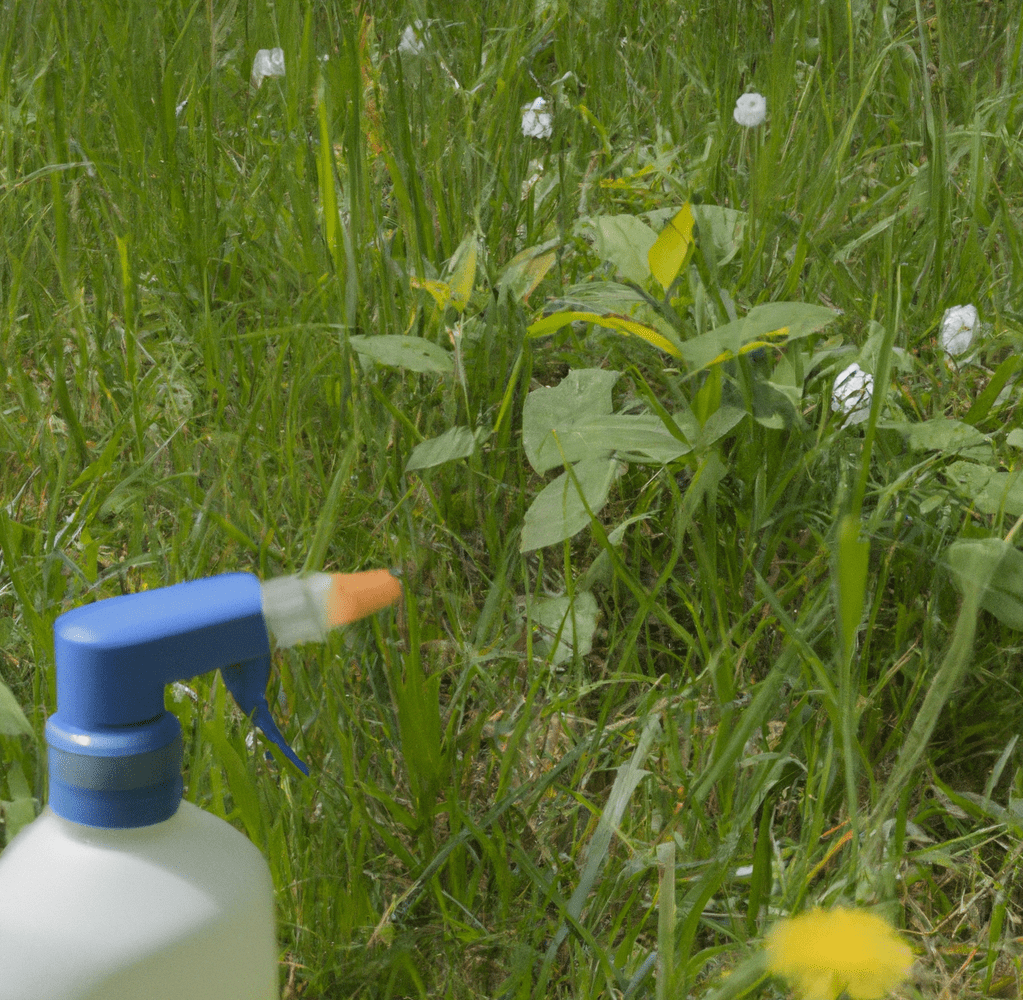
Biological Methods (Such As Using Natural Predators and Competitors to Control Weed Growth)
There are natural alternatives to chemical herbicides that can be used to manage weed growth such as biological methods:
- Utilizing natural rivals and predators to control weed populations is one such technique. For instance, the presence of certain insect species that feed on particular weed species can aid to slow the growth of those weeds. Furthermore, it is well-recognized that some plants compete with weeds for resources like sunlight, water, and nutrients.
This kind of biological control is not only secure and efficient but also sustainable and doesn’t add to the rising problem of herbicide resistance in agriculture, which includes glyphosate resistance.
Cultural Methods (Such As Crop Rotation and Proper Soil Management)
Millions of people throughout the world receive their food and other necessities from agricultural production, which is a crucial component of human society. Despite the fact that modern agriculture frequently relies on chemical inputs, cultural techniques like crop rotation and effective soil management can be employed to preserve beautiful landscapes and safeguard the environment.
Crop rotation is the practice of planting several crops in the same field over a period of years in a certain order. This promotes weed management, soil fertility maintenance, and the avoidance of insect and disease outbreaks. Farmers can eliminate soil-borne pathogens, disrupt pest and disease cycles, and maintain the health of their soil by rotating their crops.
Additionally, natural alternatives to chemical herbicides are essential for sustainable agriculture which is made possible with good soil management. Healthy soil is essential for plant growth because it contains a complex mixture of organic matter, minerals, air, and water. Farmers can lessen the need for chemical inputs by carefully maintaining the soil to maintain the ideal balance of soil particles, organic matter, and water. This can strengthen the soil’s structure and encourage the formation of strong roots, leading to more resilient and productive crops.
Case Studies and Success Stories
Utilizing natural alternatives to chemical herbicides such as decreased toxicity, long-term cost savings, and decreased reliance on synthetic chemicals. However, using natural alternatives might also come with difficulties including reduced efficacy and more management requirements. Despite these difficulties, more farmers are coming to see the advantages of natural substitutes and are making efforts to lessen their reliance on synthetic herbicides.
Bottom Line: Natural Alternatives to Chemical Herbicides
The natural alternatives to chemical herbicides result in better soil, safer use of weed control, and less of a negative environmental impact. Our food systems and the sustainability of the natural world depend heavily on farmers and growers. They may create healthier soils, safer surroundings, and greater health for themselves and their communities by employing natural herbicide substitutes instead of chemical ones. Additionally, including natural alternatives in their weed management techniques might ultimately save money and effort.
FAQs on The Natural Alternatives to Chemical Herbicides
How do herbicides work?
Herbicides are substances that are used to kill or control the growth of plants, especially weeds. They are extensively utilized in agriculture and landscaping to preserve crop yields and stop weed development. Concerns exist, though, regarding their impact on the environment and public health.
What varieties of weeds are there?
Weeds come in a variety of forms, such as annual, perennial, broadleaf, and grassland weeds. Effective weed control requires a thorough understanding of their biological processes and growth patterns.
What risks do using chemical pesticides pose?
By seeping into the soil and groundwater, chemical herbicides have the potential to harm vegetation, wildlife, and the ecosystem. The health of both people and animals may be harmed by them.
What role does weed knowledge play in finding effective pesticide alternatives?
In order to choose the best herbicide and achieve the best outcomes, it is essential to understand the biology and behavior of weeds. The soil constituents in which a particular weed species flourishes and the stage of the weed’s development may have an effect on the herbicide’s efficacy.
Are there any non-chemical alternatives to herbicides?
The answer is that there are secure, reasonably priced, and sustainable alternatives to traditional chemical herbicides, including as vinegar and boiling water. These alternate methods still effectively reduce weeds while being safe to use around children, pets, and wildlife.


